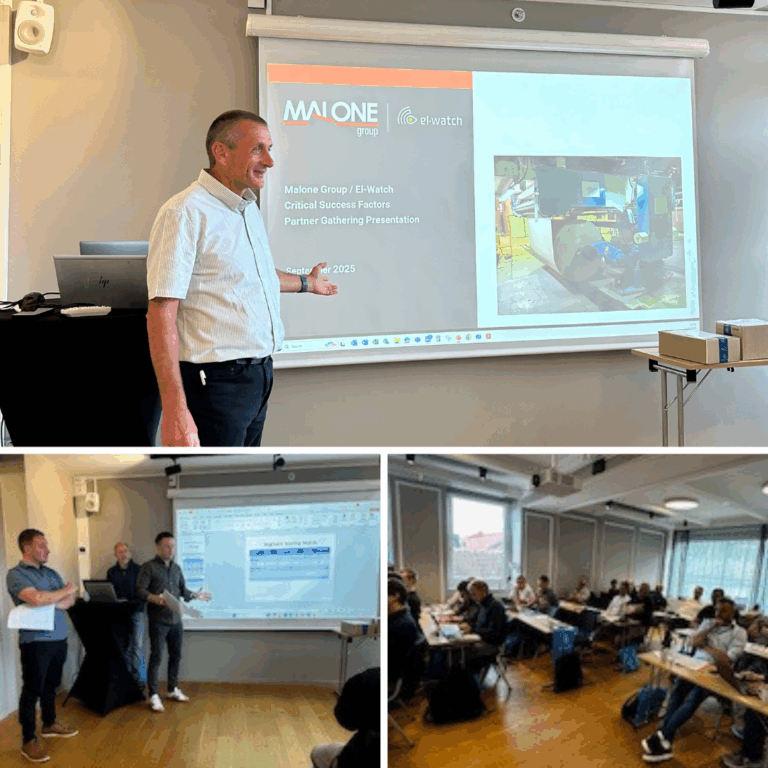European Week for Safety and Health at Work organised by EU-OSHA (the European Agency for Safety and Health at Work), happens annually and events can be found across the continent to raise awareness and educate employees and employers alike in the theme of the year. This year, the week shall run from 21st – 25th October and shall focus on dangerous substances in the workplace.
Here at Malone Group, we have a host of events taking place across the week for our employees, ranging from spinning classes and healthy smoothie recipes; to basic life support instruction and mental health sessions. In line with this year’s theme however, I have put together this short article to discuss some of the key issues that I come across within the construction industry regarding dangerous substances, and some of my top tips.
Such substances are commonly referred to as COSHH after the legislation that regulates them – the Control of Substances Hazardous to Health Regulations 2002. This topic is vast and each of the substances that it applies to could not be covered in a thousand of these articles! In essence though, dangerous substances are:
a. those listed as hazardous by the CLP Regulations (EU regulation for Classification, Labelling and Packaging);
b. those for which a workplace exposure limit has been approved;
c. those which are biological agents such as micro-organisms and parasites
d. those which are inhalable dusts (dusts that can enter the nose and mouth during breathing) and those which are respirable dusts (dusts that can enter the lung’s gas exchange during breathing) when above prescribed concentrations – even if the dust itself is inert; and finally,
e. any other substance which may not fall into any of the previous categories, but creates a risk to health because of its chemical or toxicological properties and the way it is used or is present at the workplace. Examples could include an inert gas that could displace oxygen if released into the atmosphere causing asphyxiation, or even the dander found in animal fur that may be an asthmagen.
This goes to show that COSHH does not simply cover your stereotypical containers of nasty chemicals covered with pictures of skulls and crossbones!
One of the main issues that I come across when a hazardous substance is to be brought to site or generated during a work process, is the confusion when it comes to COSHH assessments and Material Safety Data Sheets (MSDS). A lot of contractors seem to be under the illusion that a MSDS is all that is required and is a risk assessment, however this is far from the case.
A MSDS must be supplied with the substance and is a legal requirement of the REACH Regulations (Registration, Evaluation, Authorisation and Restriction of Chemicals). All safety data sheets follow a set format that covers sixteen sections, covering topics including first aid measures, safe transportation, safe storage, safe handling and many others. Whilst this sheet will provide a lot of the information required to form the basis of the risk assessment, it is not sufficient in itself. This is because the data is provided in laboratory conditions for industrial amounts and whilst it may prescribe it’s suggested usage, you may be using the substance in a different manner or for a different purpose. This is where a COSHH assessment comes in. A COSHH assessment is essentially a risk assessment for the activity in which the substance is being used. To be suitable and sufficient, it should tell employees how the substance may enter and harm the body (ingestion, inhalation, injection, absorption) and the control measures required to negate this. Remember – as with all control measures, PPE is a last resort! However, where required, the type and standard of the PPE must be detailed on the assessment. For example, simply stating ”gloves” leaves a lot of room for error. You would not want one of your employees handling a corrosive acid wearing their winter mitts! Similarly, where RPE (Respiratory Protective Equipment) is required, it must state the type and APF (Assigned Protection Factor).
This leads on nicely to my next topic. RPE. Where your risk assessment dictates that RPE is required to protect the wearer from breathing in a hazardous substance (dusts, gases, vapours etc.), it is essential that care is taken to ensure that the model selected is adequate (in its level of protection and against what it protects) and suitable (for the individual that shall wear it, the task involved and the environment that it shall be carried out in).
The required level of protection can often be found on the MSDS, however if not, it can usually be easily obtained via some basic research from a reliable source. The HSE website is always my first port of call, and their information sheet on construction dusts (CIS36) is one of the most useful tools available in my humble opinion. It can be found here: http://www.hse.gov.uk/pubns/cis36.pdf.
The suitability will depend on various factors, including the duration of the task and interaction with any other PPE required for the task. Where a mask or respirator is selected that will rely on a tight fit to provide a seal, face-fit testing is absolutely essential and a legal requirement of the COSHH regulations. Once an individual passes a test, he will be issued with a certificate detailing the model that he was tested with and the conditions. Remember, this type of equipment relies on a tight seal and so you must be clean shaven for it to work! Where this is not a possibility for individuals, perhaps for religious or cultural reasons, alternatives are available such as powered respirators that rely on positive pressure rather than a tight seal. However, whilst they may not require a face-fit test, they are usually far more expensive.
Regardless of the type selected, remember that adequate levels of training and supervision will always be required.
That concludes this article and I hope that it has proved useful for those who have taken the time to read it. If you wish for any further advice or to discuss how we can help you keep employees or contractors safe during construction projects, please do not hesitate to contact me. Be sure to get involved with the European Week for Safety and Health 2019 wherever you get the chance!
Daniel Clapcott
Regional Safety Manager Email: daniel.clapcott@malonegroup.com
Mobile: 07811 267 211

















